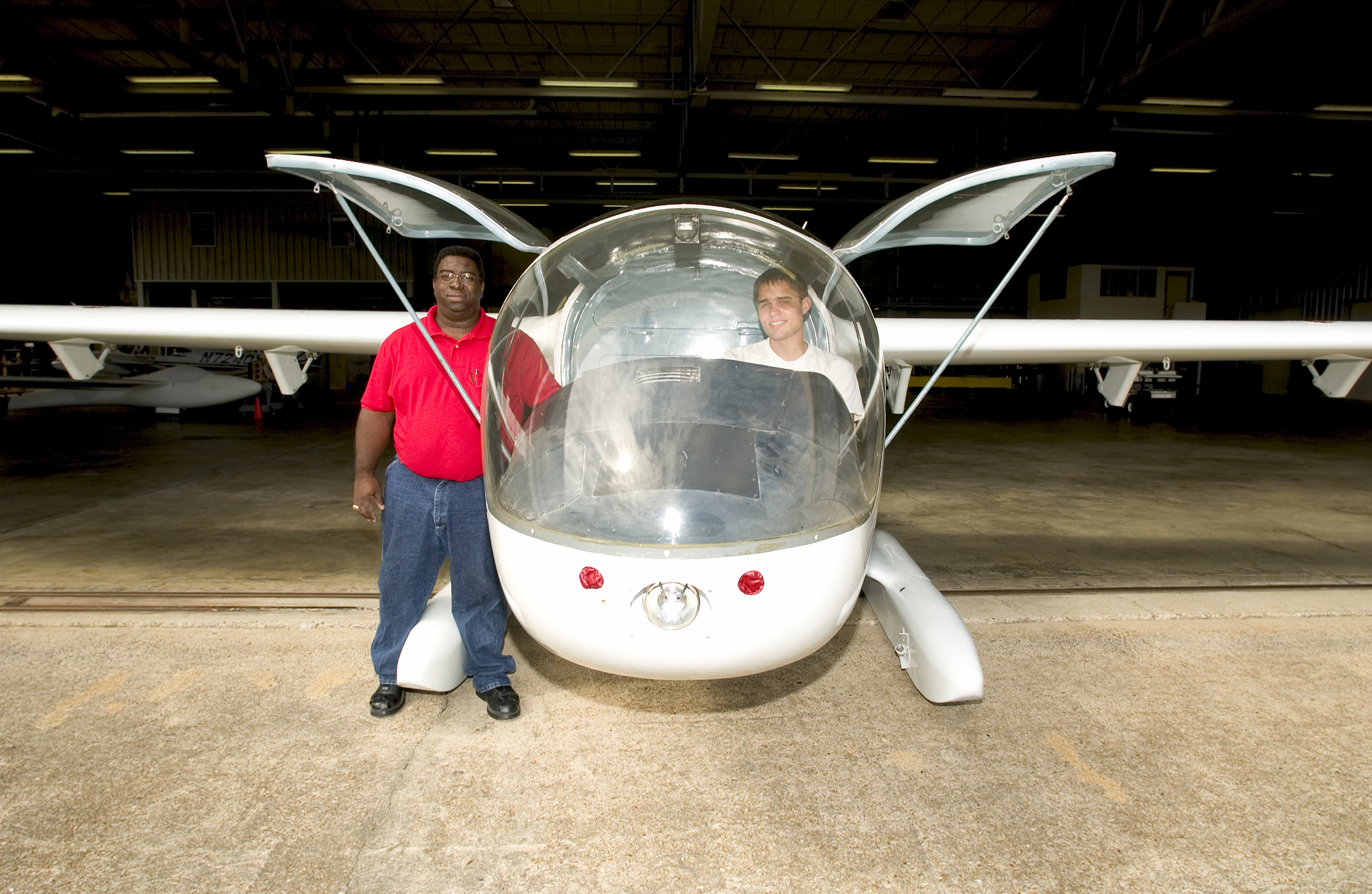Contact: Phil Hearn

IT'S A MARVEL--Raspet Flight Research Laboratory research associate Calvin Walker (right) and Mark Vanzwoll, an MSU junior aerospace major from Oscoda, Mich., show off the MARVEL II vintage experimental airplane that will be loaned to the Southern Museum of Flight in Birmingham, Ala., for display. The MARVEL, a short takeoff and landing plane developed by the MSU flight lab, was the world's first all-composite aircraft
Mississippi State is loaning a vintage experimental airplane--developed by the university a half-century ago as the world's first all-composite aircraft--for display at a Birmingham, Ala., museum.
The second edition of the MARVEL--Mississippi Aerophysics Research Vehicle with Extended Latitude--will be disassembled and trucked to Birmingham Tuesday [Sept. 21] by employees of the university's Raspet Flight Research Laboratory.
"Dr. Don Dodd, curator of the Southern Museum of Flight, has graciously offered to display the airplane," said Raspet research associate Calvin Walker. "The MARVEL II will be the centerpiece of the museum's General Aviation Hangar."
Walker said the plane, which features a 250-horsepower Allison turboshaft engine turning a three-bladed propeller, will be reassembled by Raspet staff and placed on indefinite display at the museum. The facility is located at 4343 73rd St. North, two blocks east of the Birmingham International Airport.
"The airplane was fabricated using fiberglass, making the MARVEL the world's first all-composite aircraft," said Walker.
He said the plane earlier was displayed at the Experimental Aircraft Association annual fly-in at Oshkosh, Wisc., as part of an effort to lift the national visibility of MSU's Department of Aerospace Engineering. The department serves as administrative home for the Raspet flight lab, which is directed by David Lawrence.
Raspet originally developed the MARVEL under a contract with the U.S. Army Aviation Materiel Laboratories in the late 1950s.
"The contract was to develop a short take-off and landing observation airplane, making use of boundary layer control technology," explained Lawrence. "With the U.S. Army designation XV-11A, the MARVEL first flew on Dec. 1, 1965, and continued flying until 1970, when Army funding ended."
He said the plane was brought out of storage in 1981 to demonstrate short takeoffs and landings in the sandy deserts of Saudi Arabia. The MARVEL II, initially featuring a 420 horsepower engine, premiered with a 1982 test flight in Starkville.
"The requirements were that the airplane be able to take off from sand with a takeoff run of about 300 feet and have low-observable characteristics, such as low infra-red and radar signatures," Walker said.
He said the MARVEL II also was used for testing in Saudi Arabia and then was returned to Raspet, where the original 250 horsepower engine was reinstalled. The aircraft continued flying until the mid-1990s.
The Raspet lab is a nationally recognized design and development resource for high-performance sailplanes and full-scale turbine-powered aircraft, with a solid research-and-testing track record spanning more than a half-century. It recently completed new molds for a new-generation unmanned aerial vehicle that will be fielded next year.
NEWS EDITORS/DIRECTORS: For more information, telephone Mr. Walker at (662) 325-9614.